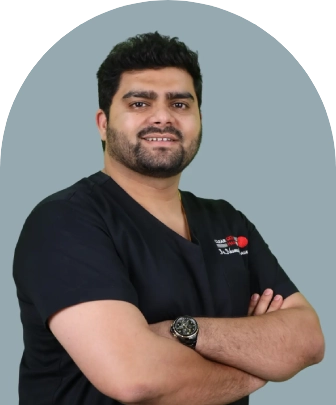13th June, 2024

Hair loss can happen due to various factors, and it can be autoimmune or due to stress, genetics or hormonal issues like DHT or Dihydrotestosterone. If your balding patches have started to become visible, it is time to opt for a hair transplant procedure. How to get started? You have decided to go for a permanent solution: a hair transplant
As a first step, visit your nearest dermatologist to get your scalp analysis and understand the cause of the hair loss. After the examination, the dermatologist can help you choose the right procedure. They can inform you about the grade of your baldness and can help you make an informed decision.
The degree of your baldness can give an idea of how many grafts are required for the transplant. There are two hair transplant procedures: FUT-follicular unit transplant and FUE-follicular unit extraction. FUE hair transplant is the latest and most effective procedure that surgeons and patients opt for.
FUE hair transplant surgery is minimally invasive and almost a painless hair transplant procedure. It is always recommended to ask queries regarding the FUE hair transplant procedure, what the outcome will be, and how the cost of the procedure will be defined. The cost of the procedure depends on the skill and experience of the FUE hair transplant team and the advanced infrastructure of the reputed clinic, along with the size and area of the transplant and the number of grafts.
What’s covered in the article?
- What is the FUE hair transplant procedure?
- What is a Hair Transplant?
- Types of Hair Transplants
- The procedure of FUE Hair Transplant
- Key Benefits of FUE Hair Transplant
- FUE Risks and Side Effects
- Recovery Timelines & Aftercare in FUE Hair Transplant
- Number of FUE Sessions for Natural & Best Hair Transplant Results
- Cost of FUE Hair Transplant in Pune
- HairMD Pune for Safe & Best FUE Hair Transplant?
- Conclusion
What is the FUE hair transplant procedure?
Irinotecan is available as an intravenous injection, which is given together with other medicines to treat patients suffering from colon and small-cell lung cancer. The injection is either used alone or with fluorouracil. If used for treating small cell lung cancer, it is used with cisplatin. Irinotecan interferes with the growth of cancer cells and destroys them, but it also affects the normal cells, which leads to side effects.
Hair loss occurs as a common side effect of Irinotecan. Hair starts to fall or thin out in the 3rd or 4th week after the first dose of irinotecan, although it may happen earlier. Hair may completely fall out. Patients may also have thinning and loss of eyelashes, eyebrows and other body hair. In most cases, hair loss may not be of serious concern as the hair grows back after completing the irinotecan course.
What is a Hair Transplant?
A hair transplant is a surgical procedure that involves moving hair follicles from one part of the body, known as the donor site, to a balding or thinning area of the body, known as the recipient site. This procedure is primarily used to treat male pattern baldness, but it can also help restore eyelashes, eyebrows, beard hair, and hair on the chest and pubic area. In addition, hair transplants can be used to fill in scars caused by accidents or surgery.
Types of Hair Transplants
There are mainly two types of hair transplant procedures:
- FUT (Follicular Unit Transplantation):
Also referred to as strip harvesting, FUT is a traditional method where a strip of scalp is removed from the donor area, usually from the back of the head. The strip is then dissected into individual follicular units by a surgical team, and these units are transplanted to the recipient site. Although effective, this technique can leave a linear scar in the donor area. - FUE (Follicular Unit Extraction):
FUE is a more modern and less invasive method where individual hair follicles are extracted directly from the donor area using a tiny punch tool. The follicles are then transplanted one by one to the recipient site. This method is generally preferred for its minimal scarring and quicker recovery time, making it a popular choice among patients.
The procedure of FUE Hair Transplant
Consultation
The procedure begins with an initial consultation with a qualified Hair Transplant Surgeon. During this session, the surgeon will assess the patient’s hair loss, discuss expectations, and determine suitability for the FUE procedure. This is also an opportunity for the patient to ask any questions and fully understand the risks and benefits involved.
Preparation
Before the surgery, the patient will undergo a preparation phase which includes trimming the donor area’s hair to a short length. This allows the surgeon better visibility and access to the hair follicles. The patient will also receive local anaesthesia to the donor and recipient areas to ensure a painless procedure.
Extraction
The extraction process involves using a specialised punch tool to make tiny incisions around individual hair follicles in the donor area. Each follicle is carefully extracted, ensuring minimal damage to the surrounding tissues. This meticulous process is time-consuming but crucial for achieving optimal graft survival rates.
Puncturing
Once sufficient follicles have been harvested, the surgeon will create tiny puncture sites in the recipient area where the transplanted follicles will be placed. The angles and density of these puncture sites are carefully considered to ensure that the new hair will grow in a natural pattern.
Insertion
The extracted hair follicles are then inserted one by one into the puncture sites. The surgeon uses fine instruments to ensure precise placement of each follicle, which is critical for achieving natural-looking results. The grafts are typically placed closer together in areas where more density is desired.
Blending
After the insertion, the grafts are blended into the surrounding hair to ensure seamless integration. The surgeon may make additional adjustments to ensure the transplanted hair matches the natural hair in direction and density. Proper blending is key to achieving a natural and aesthetically pleasing outcome
Key Benefits of FUE Hair Transplant
The Follicular Unit Extraction (FUE) hair transplant technique offers a multitude of benefits that make it a preferred choice for many patients. One of the most significant advantages is the minimal scarring associated with FUE. Unlike traditional strip methods, which can leave a noticeable linear scar, FUE involves tiny, circular incisions that heal to be barely visible.
This allows patients to wear shorter hairstyles without worrying about conspicuous scars. Another key benefit is the quicker recovery time. Patients can often return to their normal activities within a few days following the procedure.
The use of local anaesthesia also ensures that the process is virtually painless, both during and after the surgery. Additionally, the meticulous extraction and placement of follicles result in a more natural-looking hairline and growth pattern, enhancing the overall aesthetic outcome.
FUE is also highly versatile, making it suitable for various types of hair loss and scalp conditions. Whether a patient requires a full hairline restoration or a touch-up to add density, FUE can be customised to meet individual needs.
Furthermore, the high survival rate of grafts harvested through FUE ensures that the results are long-lasting and satisfying. In summary, the benefits of FUE hair transplant include minimal scarring, quicker recovery, virtually painless procedure, natural-looking results, and high versatility and graft survival rate. These advantages make FUE an excellent option for those seeking effective hair restoration.
FUE Risks and Side Effects
While Follicular Unit Extraction (FUE) offers numerous benefits, it is important to be aware of the potential risks and side effects associated with the procedure. One notable risk is overharvesting, where too many grafts are taken from the donor area, which can result in thinning or patchiness. Additionally, harvesting too wide an area can lead to an uneven donor site, affecting the overall appearance of the scalp. Patients may also experience some side effects following FUE. Scalp cysts can occur as a complication, usually forming when the hair follicles become trapped under the skin. Mild infections are another possible side effect, which can be managed with appropriate aftercare and medication. Although generally minor, these issues highlight the need for choosing a skilled and experienced surgeon to minimise risks and ensure optimal results.
Recovery Timelines & Aftercare in FUE Hair Transplant
Understanding the recovery timelines and engaging in proper aftercare are crucial factors in achieving the best possible results from a Follicular Unit Extraction (FUE) hair transplant. Generally, FUE boasts a relatively quick recovery period compared to traditional hair transplant techniques. Here, we break down the recovery process and necessary aftercare to guide patients through their post-procedure journey.
Immediate Post-Operative Period (0-7 Days)
In the first week following the procedure, patients may experience mild soreness, swelling, and redness in both the donor and recipient areas. It is essential to follow the surgeon’s advice on medication and to avoid strenuous activities to minimise discomfort and reduce the risk of infection. Gentle washing of the scalp with a mild shampoo is usually recommended after a few days to clean the area without disturbing the grafts.
Short-Term Recovery (1-4 Weeks)
During this period, scabbing may occur around the grafts but will gradually fall off as the scalp heals. Hair follicles may enter a temporary resting phase known as “shock loss,” where transplanted hairs shed, but this is a normal part of the healing process. Patients should avoid direct sun exposure and refrain from using hair products that could irritate the scalp. It is also advisable to sleep with the head elevated to lessen swelling.
Medium-Term Recovery (1-4 Months)
New hair growth typically starts to become noticeable within two to four months post-procedure. This stage can be a waiting game as the hair begins to grow in cycles, gradually becoming thicker and more consistent over time. Regular follow-up appointments with the surgeon are essential to monitor progress and address any concerns.
Long-Term Recovery (6-12 Months)
Significant hair growth and visible results are usually apparent six to twelve months after the transplant. By this stage, the transplanted hair blends seamlessly with the existing hair, delivering natural-looking density and coverage. Continued care, including a healthy diet and appropriate hair care practices, supports the longevity of the results.
Aftercare Tips
- Strictly follow post-op instructions provided by the surgeon.
- Use prescribed medications to alleviate pain and prevent infection.
- Avoid smoking and alcohol intake during the recovery period to promote healing.
- Implement a gentle hair care routine, avoiding harsh treatments or styling.
- Regularly communicate with your surgeon and attend all follow-up visits.
Following these guidelines ensures a smoother recovery process and maximises the outcome of the FUE hair transplant, helping patients achieve their desired look effectively and safely.
Number of FUE Sessions for Natural & Best Hair Transplant Results
The number of FUE sessions required to achieve the best and most natural results varies significantly from person to person. Factors such as the extent of hair loss, the density of the donor’s hair, and individual patient goals all play a crucial role in determining the necessary number of sessions. Generally, mild to moderate hair loss might be addressed adequately in a single session, which can transplant thousands of grafts. However, more extensive hair loss could require multiple sessions spread over several months to ensure optimal coverage and density. Consulting with a qualified hair transplant surgeon is essential to develop a customised treatment plan tailored to the individual’s specific needs, ensuring natural-looking and aesthetically pleasing results.
Cost of FUE Hair Transplant in Pune
The cost of a Follicular Unit Extraction (FUE) hair transplant in Pune can vary widely based on several factors. These factors include the extent of hair loss, the number of grafts required, and the clinic or surgeon chosen. On average, the cost per graft can range from ₹30 to ₹50. Therefore, for a session involving 2,000 grafts, the total cost might approximate between ₹60,000 and ₹1,00,000. Additional expenses may include pre-operative assessments, post-operative care, and any prescribed medications. It is crucial to select a reputable hair transplant clinic with skilled HT surgeons to ensure a successful outcome, and it’s advisable to discuss all potential costs during the initial consultation to avoid unexpected expenses.
HairMD Pune for Safe & Best FUE Hair Transplant?
HairMD, Pune stands out as a leading expert in FUE hair transplants, offering unparalleled quality and care. Our team comprises highly skilled surgeons with years of experience in the field, ensuring that each patient receives personalised and effective treatment. At HairMD, we utilise the latest advancements in technology and techniques to deliver optimal results, enhancing the natural appearance and density of the transplanted hair. Furthermore, our commitment to patient safety and comfort ensures a smooth and comfortable experience, from the initial consultation to post-operative care. Choose HairMD in Pune for your FUE hair transplant and entrust your hair restoration journey to the hands of dedicated professionals
Do You Know?
Nearly 250 Patients Visit HairMD
Everyday For Various Hair Concerns?
(Your journey to healthier and fuller hair starts here!)
Meet Our Dermatologists
Conclusion
The article on the FUE hair transplant procedure explains it as a minimally invasive method where individual hair follicles are extracted and transplanted to areas of hair loss. The procedure offers benefits like minimal scarring, quicker recovery, and natural-looking results. However, it also highlights risks such as potential overharvesting and scalp cysts. Aftercare includes medication, avoiding strenuous activities, and following the surgeon’s instructions for a successful recovery. Results are generally visible within 12-18 months.
Further Reading
Hair Transplant Myths & Facts
Uncover the truth behind common myths about hair transplants. Learn the facts about the procedure, recovery, results, and who makes an ideal candidate for a successful transplant.
How to remove scabs after Hair Transplant? | HairMD
The correct way to remove scabs after hair transplant without damaging grafts. Get expert-backed tips from HairMD Pune to support a smooth recovery.
Shedding Phase After Hair Transplant
Discover essential medications post-hair transplant like finasteride and minoxidil. Learn tips for care and recovery from HairMD Pune experts.
What medications should be taken after a hair transplant?
Discover essential medications post-hair transplant like finasteride and minoxidil. Learn tips for care and recovery from HairMD Pune experts.
Have thoughts? Please let us know
We are committed not only to treating you, but also educating you.










